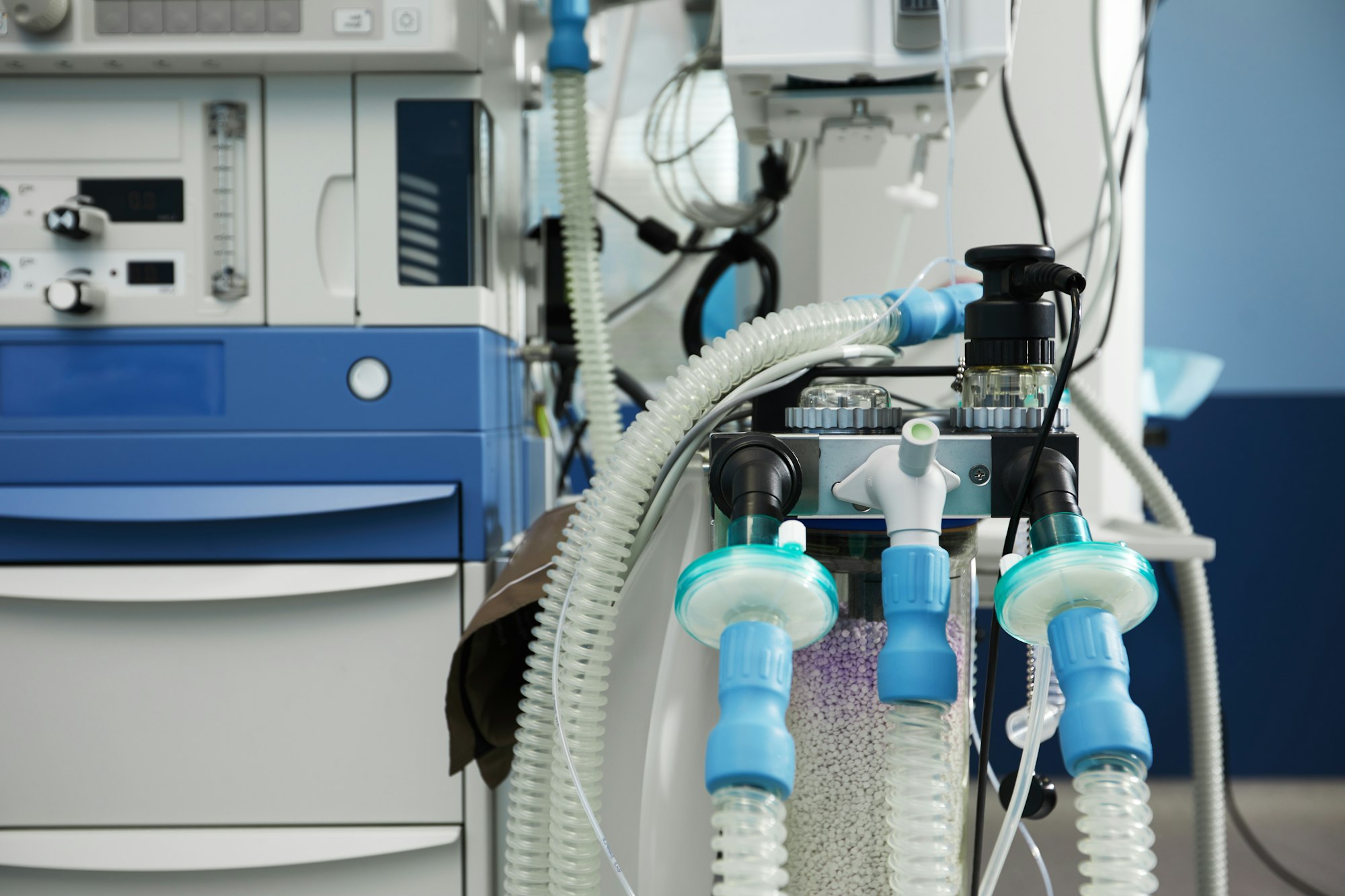Portable Oxygen Concentrator Covered By Medicare: Guideline
Portable oxygen concentrators (POCs) have revolutionized the lives of individuals who require supplemental oxygen therapy. These devices are lightweight compact, and enable individuals to maintain an active and independent lifestyle. However, the cost of POCs can be significant, making it challenging for many Medicare beneficiaries to afford these life-enhancing devices. In this article, we will understand the guidelines for the portable oxygen concentrator covered by Medicare and is portable oxygen concentrator covered by medicare part b. Also, we will know portable oxygen concentrator and medicare oxygen guidelines 2023
Medicare Coverage for Portable Oxygen Concentrators: Overview
Medicare, the federal health insurance program in the United States, provides coverage for specific medical equipment and supplies, including portable oxygen concentrators (POCs) for beneficiaries with specific medical conditions. Here’s an overview of Medicare coverage for POCs:
1. Medical Necessity: This means that a healthcare provider must determine that the beneficiary has a medical condition that requires oxygen therapy.
2. Coverage under Medicare Part B: POCs are typically covered under Medicare Part B, which provides medical insurance. However, it’s important to note that only specific durable medical equipment (DME) suppliers can provide Medicare-covered POCs. Beneficiaries must ensure they obtain POCs from approved suppliers to qualify for coverage.
3. Rental vs. Purchase: Medicare typically covers the rental of a POC, not its purchase. This means beneficiaries can use a POC as long as it’s medically necessary. The rental period is usually five years, after which the beneficiary owns the equipment. After five years, the supplier can no longer bill Medicare to rent the same POC to the beneficiary.
4. Competitive Bidding Areas: In some areas of the United States, Medicare uses a competitive bidding program to select suppliers for specific medical equipment and supplies. Beneficiaries in these areas must obtain POCs from contracted suppliers to receive coverage.
5. Oxygen Content: To qualify for Medicare coverage, a POC must meet specific oxygen content requirements to ensure it provides sufficient oxygen to the beneficiary.
6. Certificate of Medical Necessity (CMN): The prescribing healthcare provider must complete a Certificate of Medical Necessity (CMN) to confirm the medical necessity of the POC. The CMN is submitted to Medicare as part of the coverage process.
7. Copayments: Beneficiaries are typically responsible for copayments and coinsurance for POC rentals and any deductibles that apply to Medicare Part B services.
8. Continuous Usage: Medicare covers POCs when needed 24 hours a day, seven days a week. However, there are situations where Medicare may cover POCs for part-time or intermittent use if the beneficiary meets specific criteria.
9. Documentation and Billing: Healthcare providers and suppliers must adhere to Medicare’s documentation and billing requirements to ensure coverage. Accurate records must be maintained and submitted as needed.
10. Additional Benefits: Some beneficiaries may have supplemental coverage through Medicare Advantage (Part C) plans, which may provide extra benefits beyond those offered by Original Medicare (Part A and Part B). These plans may include additional coverage for POCs, such as coverage for purchasing the equipment.
Beneficiaries need to work closely with their healthcare providers and Medicare-approved suppliers to ensure that all Medicare requirements for POC coverage are met. Additionally, reviewing the specific terms of their Medicare Advantage plan, if applicable, can provide insights into any extra benefits or coverage options for POCs. Properly documenting the medical necessity of a POC is critical to obtaining and maintaining coverage under Medicare.
Guidelines and Benefits of Medicare Coverage for Portable Oxygen Concentrators
Medicare, the federal health insurance program for eligible individuals in the United States, offers coverage for specific durable medical equipment (DME), including portable oxygen concentrators (POCs), when specific guidelines are met. Here are the policies and benefits of Medicare coverage for POCs:
1. Medical Necessity:
- To qualify for Medicare coverage of a POC, a healthcare provider must deem it medically necessary.
- A healthcare provider must determine that the beneficiary has a medical condition that requires oxygen therapy for their health and well-being.
2. Covered Under Medicare Part B:
- POCs are typically covered under Medicare Part B, which provides medical insurance coverage.
- Ensuring that the POC is obtained from a Medicare-approved DME supplier is essential. Only approved suppliers can bill Medicare for covered equipment.
3. Rental Duration:
- Medicare typically covers the rental of a POC rather than its purchase.
- The standard rental period is five years. Medicare pays for the rental costs during this time, and the beneficiary does not own the equipment.
- After five years, the beneficiary generally becomes the owner of the POC, and Medicare will no longer cover rental costs for that same equipment.
4. Competitive Bidding Areas:
- In some areas of the country, Medicare uses a competitive bidding program to select suppliers for specific DME items, including POCs.
- Beneficiaries in these areas must obtain their POCs from contracted suppliers to receive Medicare coverage.
5. Oxygen Content Requirements:
- Medicare has specific requirements regarding the oxygen content a POC must provide to qualify for coverage.
- POCs must meet these requirements to ensure they deliver sufficient oxygen to the beneficiary.
6. Certificate of Medical Necessity (CMN):
- A healthcare provider must complete a Certificate of Medical Necessity (CMN) to confirm the medical necessity of the POC.
- The CMN is a crucial document submitted to Medicare as part of the coverage process.
7. Copayments and Deductibles:
- Beneficiaries are typically responsible for copayments and coinsurance for POC rentals.
- Part B also has an annual deductible that applies to its services and equipment.
8. Continuous Usage:
- Medicare typically covers POCs when they are needed 24 hours a day, seven days a week.
- In certain circumstances, Medicare may cover POCs for part-time or intermittent use if the beneficiary meets specific criteria.
9. Documentation and Billing:
- Accurate documentation and billing practices are essential to ensure coverage under Medicare.
- Healthcare providers and suppliers must adhere to Medicare’s requirements and maintain records for proper billing.
10. Supplemental Coverage:
- Some beneficiaries may have supplemental coverage through Medicare Advantage (Part C) plans, which may offer additional benefits beyond Original Medicare.
- This can include coverage for the purchase of POCs, depending on the specific plan.
It’s vital for beneficiaries to work closely with their healthcare providers and approved suppliers to ensure that all Medicare guidelines for POC coverage are met. Documentation of medical necessity is crucial, and understanding the terms of their Medicare Advantage plan, if applicable, can provide additional insights into coverage options. Proper adherence to Medicare requirements is vital to obtaining and maintaining POC coverage.
Is Portable Oxygen Concentrator Covered By Medicare Part B?
Yes, portable oxygen concentrators (POCs) are typically covered by Medicare Part B, which is the part of Medicare that provides coverage for medically necessary outpatient services and durable medical equipment (DME). However, some specific guidelines and criteria must be met for Medicare to cover the rental of a POC. Here’s what you need to know:
- Medical Necessity: This means that your healthcare provider must determine that you have a medical condition that requires oxygen therapy for your health and well-being.
- Medicare-Approved Supplier: You must obtain the POC from a supplier of Medicare-approved durable medical equipment (DME). Only approved suppliers can bill Medicare for the rental of covered equipment.
- Rental Period: Medicare typically covers the rental of a POC rather than its purchase. The standard rental period is five years. Medicare pays for the rental costs during this time, and you do not own the equipment.
- Competitive Bidding Areas: In certain regions of the country, Medicare uses a competitive bidding program to select suppliers for specific DME items, including POCs. If you live in one of these areas, you must obtain your POC from a contracted supplier to receive Medicare coverage.
- Oxygen Content Requirements: Medicare has specific requirements regarding the oxygen content a POC must provide to qualify for coverage. POCs must meet these requirements to ensure they deliver sufficient oxygen to you.
- Certificate of Medical Necessity (CMN): A healthcare provider must complete a Certificate of Medical Necessity to confirm the medical necessity of the POC. The CMN is a crucial document submitted to Medicare as part of the coverage process.
- Copayments and Deductibles: Beneficiaries are typically responsible for copayments and coinsurance for POC rentals.
- Continuous Usage: Medicare typically covers POCs when they are needed 24 hours a day, seven days a week. In certain circumstances, if you meet specific criteria, Medicare may cover POCs for part-time or intermittent use.
Working closely with your healthcare provider and an approved supplier is essential to ensure that you meet all the Medicare guidelines for POC coverage. Proper documentation of medical necessity and adherence to Medicare’s requirements are crucial to obtaining and maintaining POC coverage under Medicare Part B.
Conclusion
Portable oxygen concentrators (POCs) have become essential devices for individuals requiring supplemental oxygen therapy, allowing them to lead more active and independent lives. Medicare, the federal health insurance program, recognizes the importance of POCs for beneficiaries with specific medical conditions. While POCs are typically covered under Medicare Part B, some stringent guidelines and requirements must be met to qualify for coverage. These include the medical necessity of the POC, using approved suppliers, adhering to specific oxygen content requirements, and maintaining accurate documentation.
Medicare’s coverage for POCs serves as a lifeline for beneficiaries who rely on oxygen therapy. By offering this coverage, Medicare ensures those in need can access these crucial devices without incurring significant financial burdens. Beneficiaries should work closely with their healthcare providers and Medicare-approved suppliers to meet all necessary criteria and ensure proper documentation of medical necessity.
FAQ about portable oxygen concentrators
Here are some frequently asked questions (FAQ) about portable oxygen concentrators:
1. What is a portable oxygen concentrator (POC)? The surrounding air to individuals who require supplemental oxygen. Unlike traditional oxygen tanks, POCs are compact, lightweight, and can be used on the go.
2. Who can benefit from using a POC? POCs are typically prescribed for individuals with respiratory conditions that require oxygen therapy, such as chronic obstructive pulmonary disease (COPD), emphysema, or other lung diseases. They help maintain oxygen levels, improve breathing, and enhance mobility and independence.
3. How does a POC work? A POC works by drawing in ambient air, removing nitrogen, and delivering concentrated oxygen to the user through a nasal cannula or mask. It ensures the user receives the required oxygen concentration.
4. Is a prescription required for a POC? Yes, a healthcare provider’s prescription is necessary to obtain a POC. The medication confirms the medical necessity of oxygen therapy.
5. Is a POC covered by Medicare or other insurance? Medicare typically covers POC rentals for beneficiaries who meet specific criteria. Other private insurance plans may also provide coverage for POCs. Coverage details may vary, so checking with your insurance provider is essential.
6. What are the benefits of using a POC? Using a POC offers several advantages, including enhanced mobility, increased independence, and the ability to engage in various activities. It also eliminates the need to carry heavy oxygen tanks.
7. Are POCs allowed on airplanes? Many airlines permit POCs to be used during flights, but regulations may vary, so checking with the airline in advance is essential. POCs are designed to be safe and compliant with travel guidelines.
8. How long does the battery of a POC last? Battery life varies by POC model and settings. Some POCs offer a few hours of battery life, while others can last longer. Users can purchase additional batteries or use external power sources for longer trips.
9. Can I use a POC at high altitudes? Most POCs are designed to work at lofty heights, but it’s essential to check the specifications of your specific device to ensure it meets your needs.
Remember that POCs should be used by a healthcare provider who can determine the suitable device and oxygen flow settings based on your medical condition. It’s important to discuss any questions or concerns about your POC with your healthcare team.
Visit Newmedicare to get Medicare quotes, plan comparisons, consultation, plan availability, and more!





